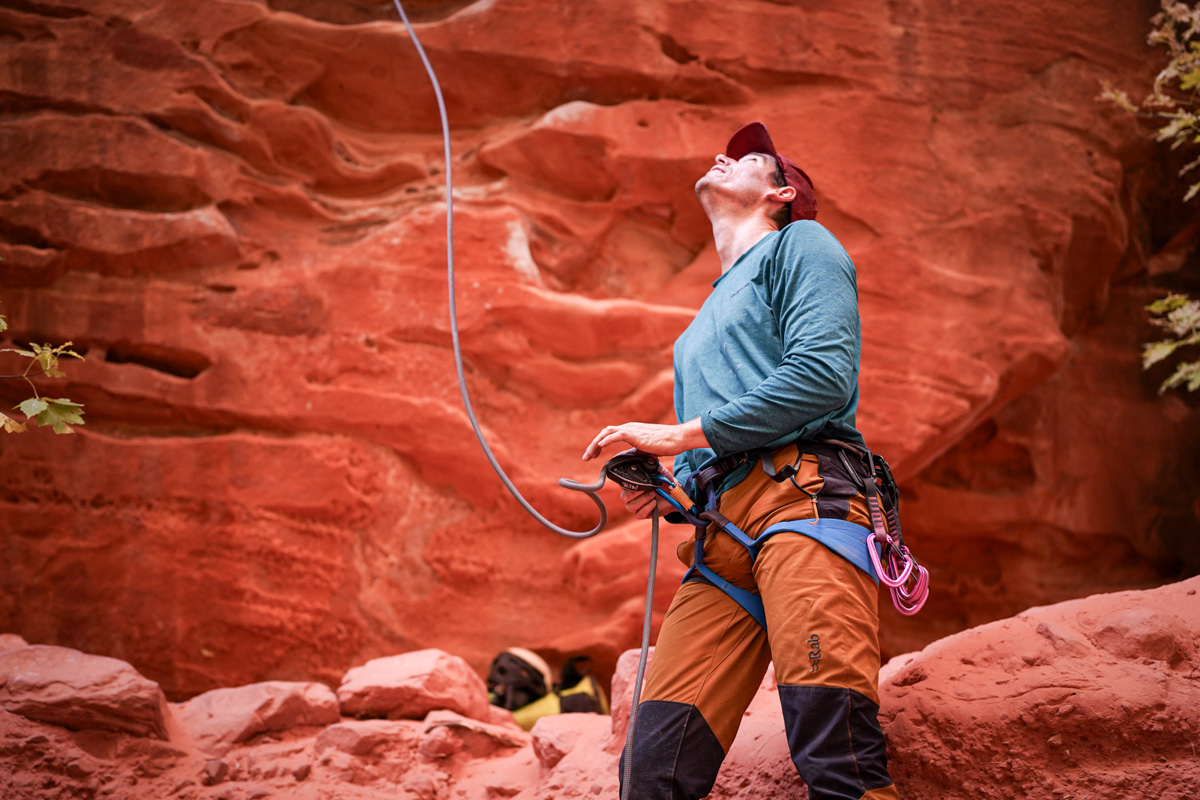
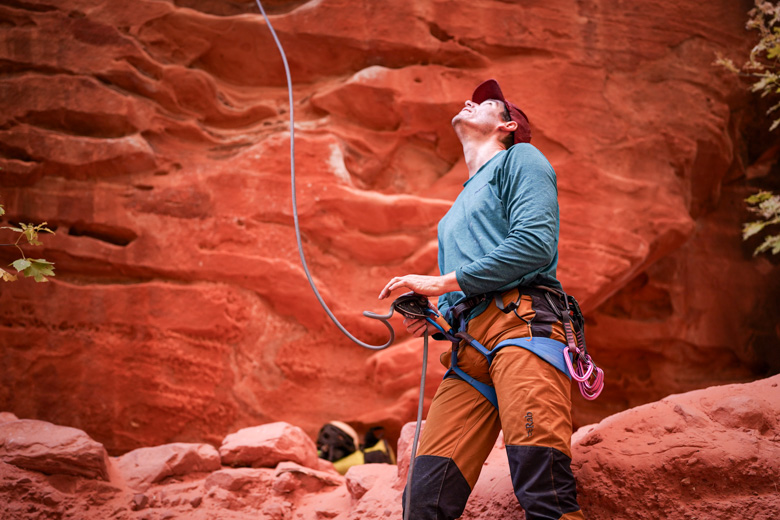
Along with a harness and rope, one of the most essential pieces of rock climbing equipment is the belay device. In short, a belay device attaches the climber’s rope to the belayer, allowing the belayer to keep the rope taut, catch the climber when they fall, and lower them safely to the ground. But although it’s a necessity, purchasing a device can be extremely confusing—there are countless choices and an absolute imperative to use it correctly. We’ve been putting belay devices through their paces for years at the crag, high up in the alpine, and everywhere in between to bring you our favorites. Below we break down our top five picks in depth, along with a more comprehensive comparison table that covers most options currently on the market, organized by category/type. For more help choosing the right belay device for your needs, check out our detailed buying advice below the picks, along with details about our testing practices.
Editor's note: We updated this guide on August 5, 2025, to include the Edelrid Pinch and Petzl Neox, and to add photos from recent testing trips. We also combed through the guide to ensure prices, colorways, and products were current at the time of publishing.
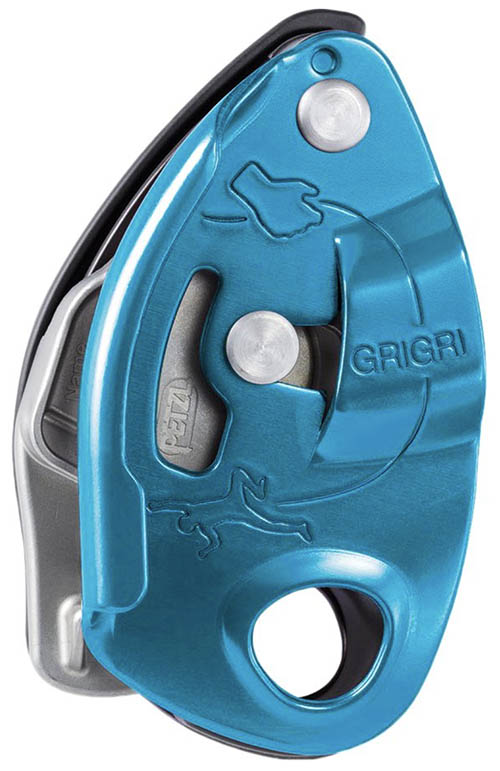 1. Petzl Grigri ($100)
1. Petzl Grigri ($100)Style: Assisted-braking
Weight: 6.2 oz.
What we like: Assisted braking allows for a more secure belay.
What we don’t: Heavy, expensive, and requires a bit of a learning curve; cannot be used for double-rope rappelling.
Ubiquitous on harnesses around the world, the Petzl Grigri has easily solidified itself as the gold standard of belay devices in the climbing community. Assisted braking devices have swiftly taken over the market, and the Grigri sets the bar high in this category. Allowing you to smoothly pay out slack to your partner while quickly camming shut and pinching the rope in place in the case of a fall, the Grigri is the full package. When the rope is held loosely in both of the belayer's hands while their partner is leading, the rope moves freely through the device, allowing you to take in—or give—slack with little resistance. Pull the rope too quickly, and the device locks up, holding the rope in place. If the climber needs slack quickly or is clipping a quickdraw above their body, the belayer can hold the device shut with their thumb and pull out as much rope as the climber needs to make their move. When it's time to lower the climber, simply pull back the lever on the left side and slowly bring them back to terra firma.
The Grigri has evolved significantly over time, but our author still uses his clunky original one when he can't find his newer model, which is a testament to the device’s longevity. Another iteration exists—the Grigri +—which integrates an anti-panic handle brake that stops the climber's descent if the belayer pulls too hard on the lever, as well as a top-rope mode that adjusts the tension of the internal cam for added ease and comfort. We don’t feel these upgrades are worth the extra cash, but new climbers may benefit from the added features. Regardless of which option you choose, Grigris are fairly heavy and bulky, and you can’t use them for double-rope rappelling on multi-pitch routes. Additionally, there’s a learning curve with giving slack quickly—if done wrong, the device will cam shut, resulting in your partner getting short-roped while making a dynamic move or trying to clip. To address this, Petzl recently released the innovative Neox (below), which bears a strong resemblance to the Grigri but features an internal wheel to minimize resistance when paying out slack.
See the Petzl Grigri
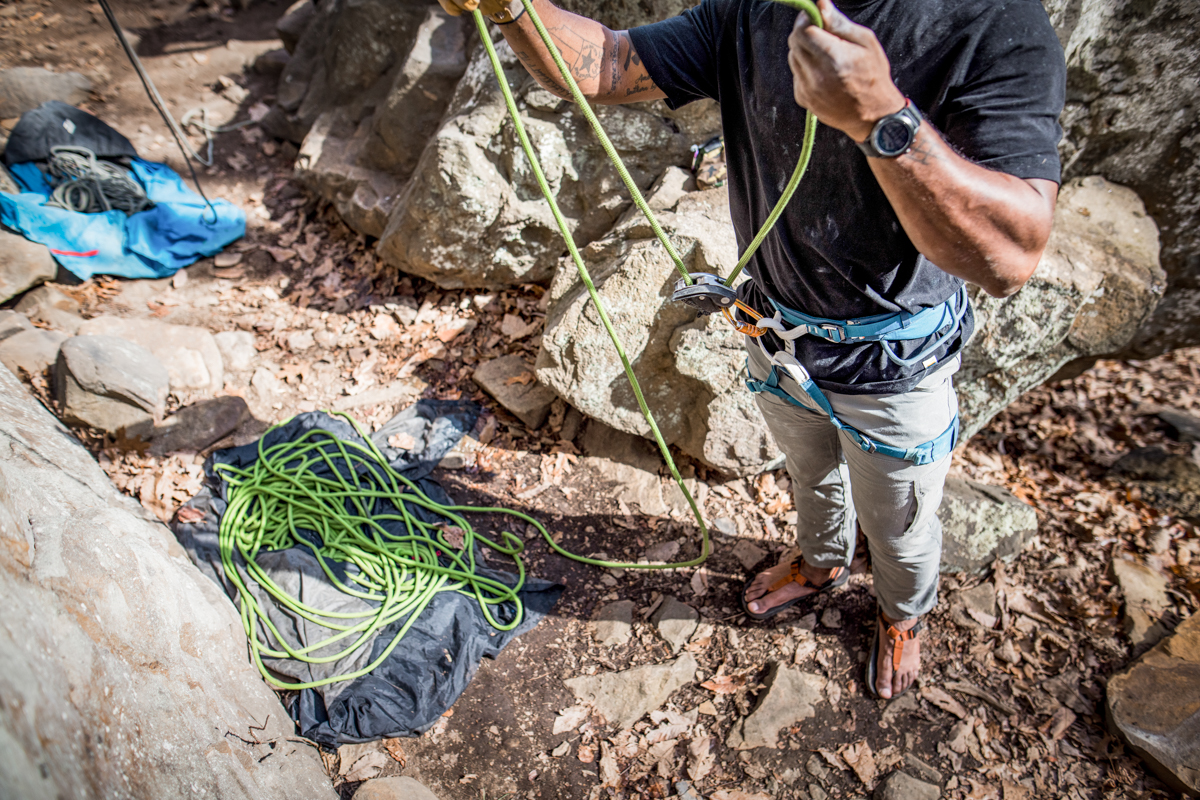
 Style: Tube
Style: Tube
Weight: 2.3 oz.
What we like: Cheap, simple, durable, and easy to use.
What we don’t: To belay from above in a multi-pitch scenario, you’ll want to step up to a device like the ATC Guide or Reverso.
Black Diamond’s ATC-XP adheres to the age-old adage: If it ain't broke, don't fix it. Harkening back to the time-tested tube-style belay devices of old, the ATC-XP is a cheap and simple but entirely functional device for new and experienced climbers alike. Even if you primarily rely on an assisted braking device like the Grigri above when belaying, it's important to have a backup—and ideally one that can be used for double-rope rappels. Many climbers (our author included) always carry some sort of lightweight tube-style device—as well as a third-hand like the Sterling HollowBlock2—on their harness when multi-pitch climbing for both belaying and rappelling, and the ATC-XP is a very popular choice. An update to Black Diamond’s legendary but decidedly basic ATC, the upgraded XP trims off considerable weight due to cutouts in the sidewalls and features high-friction grooves that offer superior hold and stopping power for belaying and lowering.
To load these devices, simply slide a bight of rope through one of the two holes—or both if rappelling—and clip a locking carabiner through the rope and keeper cable (here’s a handy YouTube video showing how to set up and belay with a tube-style device). While many modern climbers—particularly sport climbers—prefer the Grigri for belaying due to its assisted-braking capabilities, there’s still a strong cohort of holdouts who prefer the tried-and-true method of belaying with an ATC. Additionally, with fewer parts, these devices are less likely to fail or break over time. For reference, our author experienced a Grigri failure when the lever got jammed open by the rope, resulting in a ground fall, surgery, and months of recovery. To be sure, we love assisted-braking devices and continue to use them religiously, but there’s no denying the reliability and proven performance of the simple and inexpensive ATC.
See the Black Diamond ATC-XP
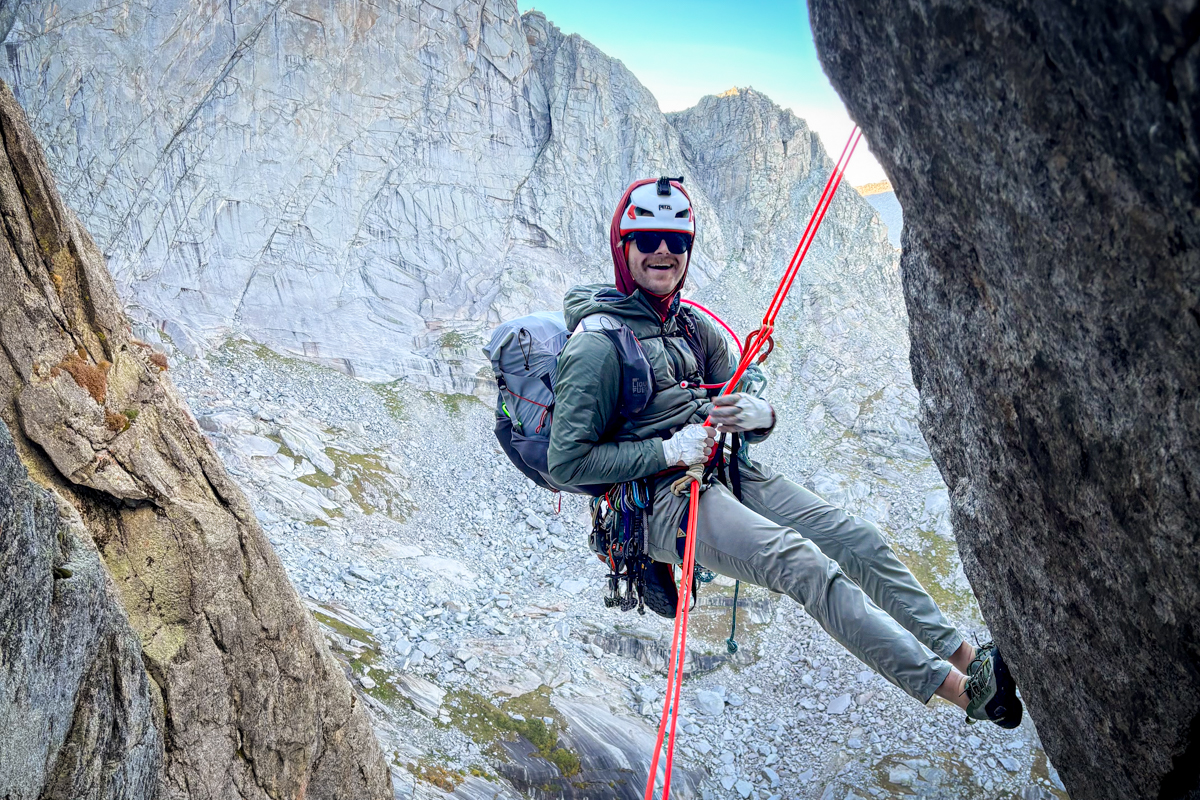
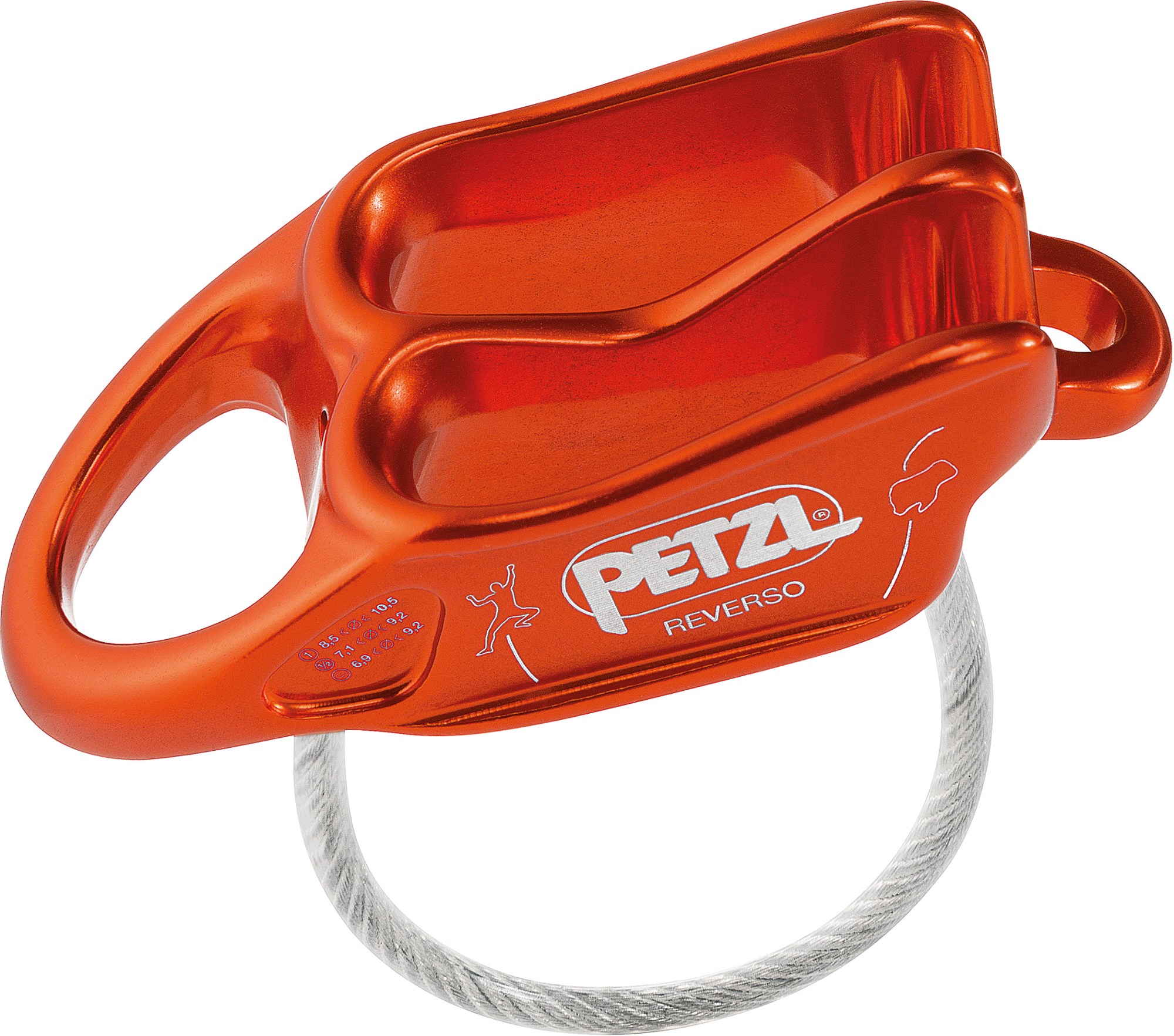 Style: Auto-blocking tube
Style: Auto-blocking tube
Weight: 2.0 oz.
What we like: Lightweight, affordable, and allows you to belay from above in guide mode; great for rappelling and double-rope setups.
What we don’t: Not as secure as the Grigri above; more expensive than BD's ATC Guide.
Similar in function and concept to the ATC-XP above, the Reverso represents the crème de la crème of another category of belay devices: those specifically designed for multi-pitch climbing. While many climbers—including our author—use a Grigri or similar device for top-belaying (bringing your partner up after you reach the end of a pitch on a multi-pitch climb), the cheaper and lighter Reverso is another popular and intuitive option. To use the device in "Reverso" mode once the leader has reached the belay and built an anchor, clip the large metal hole of the Reverso into the master point of the anchor, pull up the slack, feed a bight of rope (or two if top-belaying two climbers) through the rope slot(s), and clip a locking carabiner through the rope and keeper cable. Set up in this way, the Reverso functions similarly to a standard ATC, with the biggest difference being that the device is attached to the anchor instead of your harness (this can avoid discomfort and pinching if your second falls, as their weight will be concentrated on the anchor rather than your waist).
If the Reverso is under tension, a carabiner placed in the release hole at the other end of the device allows the belayer to give slack (for a visual description of the process, check out Petzl's helpful how-to video). The Reverso can also be used as a standard belay device (similar to the ATC-XP above) for top-roping or lead belaying on single-pitch climbs. It’s worth noting that Black Diamond offers a similarly intentioned design in their ATC-Guide, which is largely identical to the ATC-XP above but with the addition of an auto-block release hole for top-belaying. Compared to the Reverso, the ATC-Guide is a little cheaper at but weighs more at 2.8 ounces and can accommodate ropes between 8.1 and 11 millimeters in diameter (the Petzl works with single ropes from 8.5 to 10.5mm, half ropes from 7.1 to 9.2mm, and twin ropes from 6.9 to 9.2mm). Alternatively, BD’s ATC-Alpine Guide is a great alpine-specific alternative for thinner ropes (from 6.9 to 9mm), although the Reverso remains the lightest and most versatile of the bunch.
See the Petzl Reverso
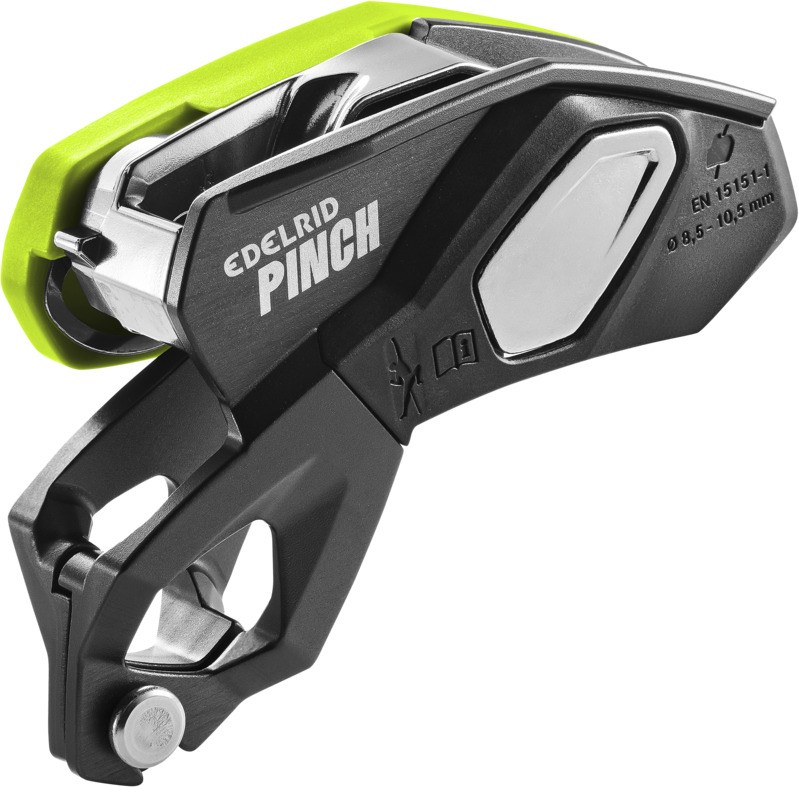 Style: Assisted-braking
Style: Assisted-braking
Weight: 8.2 oz.
What we like: Excellent rope handling and control; unique attachment system eliminates cross-loading and improves efficiency while lead belaying.
What we don’t: Anti-panic function can be frustrating; heavier than the Grigri and less intuitive for multipitch; pricey.
The Edelrid Pinch is one of the most unique assisted-braking devices to hit the climbing market in recent years—and after extensive testing, we think it just might give the Grigri a run for its money. The most notable innovation is its direct-attachment system: Instead of requiring a carabiner to clip the device to your belay loop, the Pinch can be fastened directly to it (though you can still operate it with a carabiner as well). This eliminates the possibility of cross-loading, brings the device closer to your body, and gives you greater control when lead belaying. That closer connection allows for noticeably better rope handling than the Grigri, with smoother slack payout and a more intuitive catch. Edelrid even claims that this design shortens the distance of a fall by up to 14 inches—something our tester found especially helpful on overhung sport routes. Add in top-notch ergonomics and clean action across the board, and the Pinch is a very strong contender in the assisted-braking category.
But it’s not without its quirks. The built-in anti-panic function is great in theory—it stops the rope if you pull the lowering handle too hard—but in practice, it can make both lowering and rappelling feel jerky and tedious. You can disable it with a small screw that comes in the box, but it’s one more thing to fiddle with. And while the Pinch works well in a multipitch setting when belaying from an anchor, it’s less versatile than the Grigri here—it doesn’t play well with skinny anchor slings unless you introduce a carabiner, which also eats up precious room on your harness. Still, if you mostly climb single-pitch sport and want the best rope control in the business, the Pinch is a compelling new-school alternative to the Grigri’s well-worn formula.
See the Edelrid Pinch
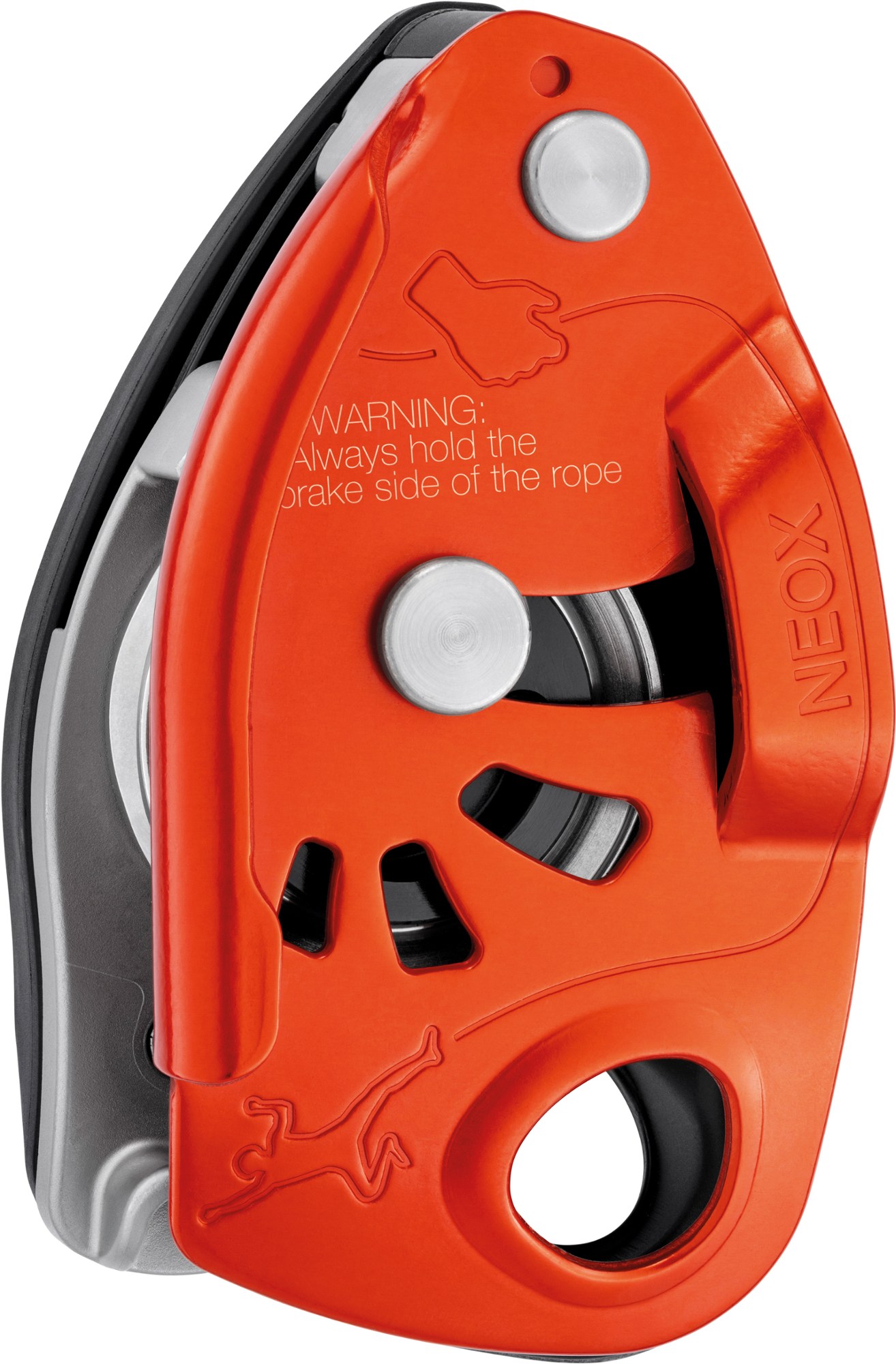 Style: Assisted-braking
Style: Assisted-braking
Weight: 8.2 oz.
What we like: Feeds slack more naturally than any ABD we’ve tested; ideal for lead belaying.
What we don’t: Expensive, heavy, and bulky; not the best for multipitch or top-down belaying.
Petzl’s Neox looks a lot like the GriGri, but a clever internal update makes it a better tool for single-pitch sport climbing. The headliner here is a rotating wheel built into the cam that dramatically reduces rope friction while feeding slack—meaning the device resists locking up when paying out rope quickly, unlike most ABDs. The result is intuitive lead belaying that feels closer to using a tube-style device, with the brake hand focused solely on braking, not fighting the cam. It also catches falls with a touch of slip, helping deliver softer catches, especially on thinner ropes. The rest of the design—lowering handle, side plate lip, and rope path—remains familiar for Grigri users, and it works smoothly across a wide range of rope diameters.
That said, the Neox is noticeably larger and heavier than the GriGri, and it’s not suited to all climbing scenarios. Multipitch romps and top-down belays reveal the limitations of its wheel-driven cam, which can hesitate to engage under light or inconsistent rope tension. It also takes up more space on a harness. Finally, we've gotten quite frustrated with the constant "clicking" sound while taking in slack under tension. Still, for single-pitch cragging—especially lead belaying—the Neox’s fluid rope handling, reliable catches, and thoughtful innovation make it one of the easiest-to-operate assisted-braking devices on the market.
See the Petzl Neox
| Belay Device* | Price | Category | Weight | # of Ropes | Rope Diameter |
|---|---|---|---|---|---|
| Kong Gi-Gi | $19 | Plate | 2.2 oz. | 2 | 8 - 13mm |
| Petzl Verso | $30 | Tube | 1.9 oz. | 2 | 6.9 - 11mm |
| Black Diamond ATC-XP | $35 | Tube | 2.3 oz. | 2 | 7.7 - 11mm |
| Mad Rock Wingman | $14 | Tube | 2.5 oz. | 2 | 8 - 11mm |
| Petzl Reverso | $50 | Auto-blocking tube | 2.0 oz. | 2 | 6.9 - 10.5mm |
| DMM Pivot | $39 | Auto-blocking tube | 2.5 oz. | 2 | 7.3 - 11mm |
| Black Diamond ATC-Alpine Guide | $50 | Auto-blocking tube | 2.6 oz. | 2 | 6.9 - 9mm |
| Wild Country Pro Guide Lite | $30 | Auto-blocking tube | 2.7 oz. | 2 | 7.7 - 11mm |
| Black Diamond ATC-Guide | $50 | Auto-blocking tube | 2.8 oz. | 2 | 8.1 - 11mm |
| Edelrid Mega Jul | $60 | Assisted (passive) | 2.6 oz. | 2 | 7.8 - 10mm |
| Mammut Smart 2.0 | $40 | Assisted (passive) | 2.8 oz. | 1 | 8.7 - 10.5mm |
| Black Diamond ATC-Pilot | $55 | Assisted (passive) | 3.3 oz. | 1 | 8.7 - 10.5mm |
| Edelrid Jul 2 | $50 | Assisted (passive) | 3.7 oz. | 1 | 8.9 - 11mm |
| Climbing Technology Click Up+ | $86 | Assisted (passive) | 3.9 oz. | 1 | 8.5 - 11mm |
| Edelrid Giga Jul | $66 | Assisted (passive) | 4.3 oz. | 2 | 7.1 – 10mm |
| Mad Rock Lifeguard | $99 | Assisted (active) | 5.4 oz. | 1 | 8.9 - 11mm |
| Petzl Grigri | $100 | Assisted (active) | 6.2 oz. | 1 | 8.5 - 11mm |
| Trango Vergo | $110 | Assisted (active) | 6.9 oz. | 1 | 8.9 - 10.7mm |
| Petzl Grigri + | $130 | Assisted (active) | 7.1 oz. | 1 | 8.5 - 11mm |
| Beal Birdie | $83 | Assisted (active) | 7.4 oz. | 1 | 8.5 - 10.5mm |
| Edelrid Pinch | $125 | Assisted (active) | 8.2 oz. | 1 | 8.5 - 10.5mm |
| Petzl Neox | $150 | Assisted (active) | 8.2 oz. | 1 | 8.5 - 11mm |
| Wild Country Revo | $145 | Assisted (active) | 8.6 oz. | 1 | 8.5 - 11mm |
| Camp Matik | $230 | Assisted (active) | 9.7 oz. | 1 | 8.6 - 10.2mm |
*Editor's note: This table is grouped first by category and then sorted from lowest to highest weight within each category.
Whether it's paying out slack at the base of our local crag, top-belaying 2,000 feet above the deck on lofty big walls, or rappelling off of far-flung alpine peaks, we've sampled just about every belay device out there in our vertical pursuits. Climbing gear is one of our favorite categories to test since the market is constantly evolving with new technology and innovative designs. Just take the Petzl Grigri for instance: We've been testing this groundbreaking design since its very first iteration and have watched the evolution firsthand, from the follow-up Grigri 2 to the upgraded Grigri + and the latest Neox, which is an innovative spinoff with a different internal mechanism for paying out slack smoother and more quickly. Like many avid climbers, we're a bit nerdy at heart, and the specs, physics, and technology behind the spectrum of belay devices have kept us enthralled for years.
Former senior editor Jenny Abegg wrangled together our initial list back in 2020. An avid high-altitude mountaineer, trad climber, and all-around vertical athlete, Jenny has been streamlining her climbing kit for over a decade and knows what to look for in a quality belay device. Current senior editor Chris Carter inherited the guide in early 2024. You're almost guaranteed to find Chris roped up on some sort of rock at least twice a week. He's structured a lot of his life around climbing and always has his finger on the pulse of the market, updating this guide with new designs as they surface. In testing belay devices, we look for a number of key performance metrics to gauge their merit, including ease of use, durability, weight and bulk, and rope accommodations. Rest assured, we would depend on any of the devices above, whether for a redpoint burn on a project or a multi-day push on El Cap.
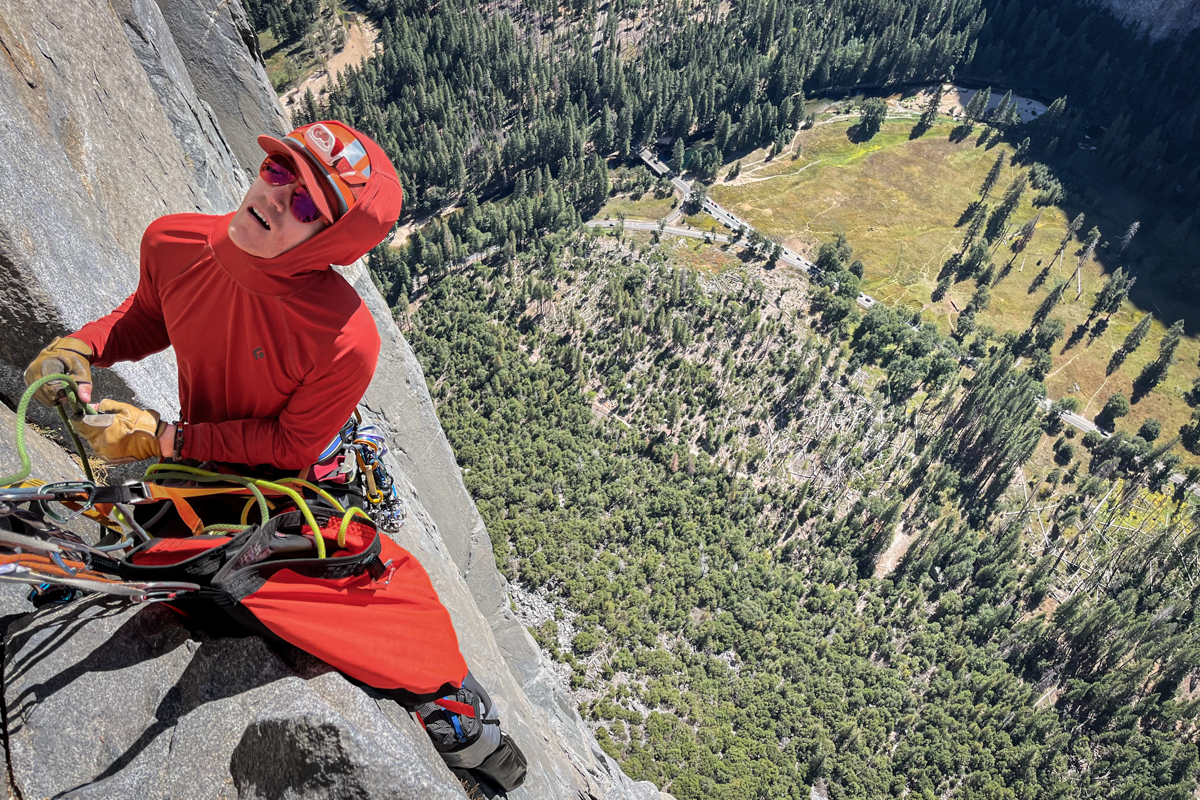
Belay devices—no matter the design—all use friction (created by a bend in the rope) to hold tension and keep the climber from falling. But despite this major similarity, there are myriad options, each with its own set of strengths, limitations, and best uses. To keep it simple, we sort belay devices into four main categories: tube, auto-blocking tube, assisted braking, and plate. Below we provide the necessary details for the four styles, including our top picks for each.
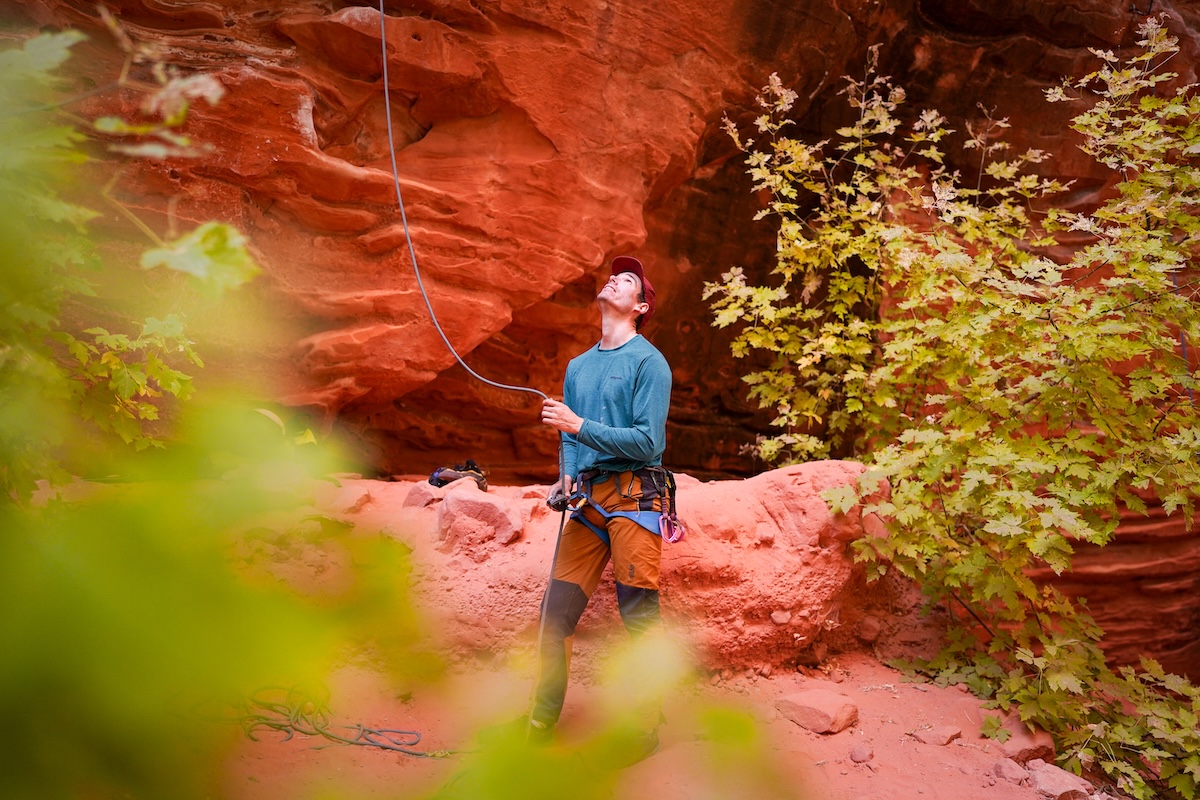
While it's important to understand the benefits and uses of each style, if you’re just getting started with climbing, we recommend keeping it simple and going with an affordable tube-style device. This is the most tried-and-true option available and has a very easy learning curve. As you progress and hone your skills, you’ll likely end up upgrading to an auto-blocking tube device or an assisted-braking model, but an entry-level design like the Black Diamond ATC-XP is realistically all that most new climbers need. Combined with a durable locking carabiner like Black Diamond’s RockLock, you’ve got a functional belay setup at a minimal price.
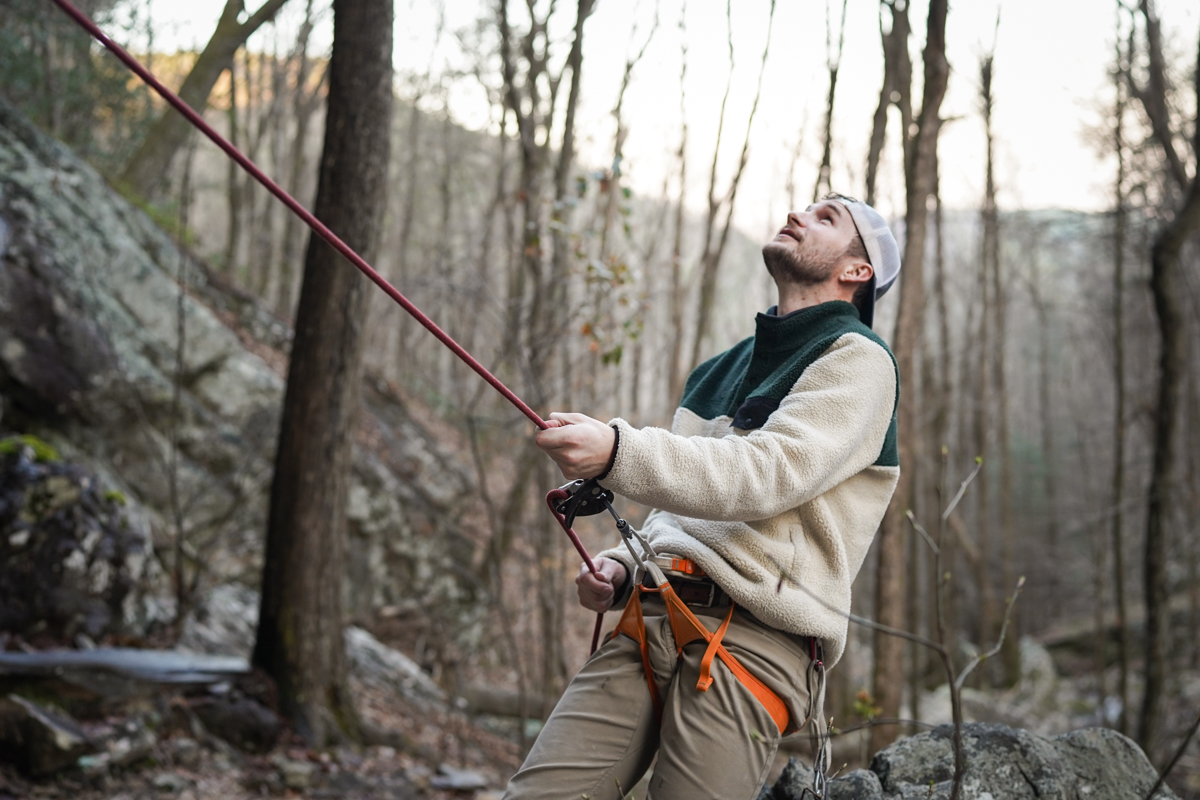
Tube
The most popular device for belaying is the tube device, commonly referred to as an “ATC” (this is Black Diamond’s name for their tube device, akin to calling all tissues “Kleenex”). A tube device is typified by two simple slots and a loop—some of these slots will have teeth on one end, which help to add friction and provide a smoother belay or lower. Tube devices are relatively lightweight and inexpensive and can handle a wide range of rope sizes (for example, the Black Diamond ATC-XP can be used with ropes 7.7 to 11mm). Additionally, they are able to accommodate two ropes for rappelling (in addition to standard belaying with a single rope). As we mentioned above, many beginner climbers will start with a tube device—the aforementioned ATC-XP being our favorite budget option—but for a bit more cash, an auto-blocking tube device (outlined below) provides a sizable bump in versatility.
Auto-Blocking Tube
Auto-blocking tube devices are very similar to standard tube devices but with an additional attachment point for belaying from the anchor. This technique is commonly referred to as “belaying in guide mode” (for more, see “Belaying a Follower” below). Like standard tube devices, auto-blocking tubes can handle a large range of rope diameters, have two slots for rappelling or belaying with double ropes, and are light and inexpensive. In top-rope and lead-belaying scenarios, the two devices operate identically. But in a situation where the climber is being belayed from the top of the climb (common in multi-pitch climbing), the extra loop attaches the device to the anchor, allowing the leader to belay the follower more safely (the rope locks down on itself to assist in braking). An auto-blocking tube device is one of the best tools for belaying a follower up a multi-pitch climb, and we recommend it to any beginner interested in expanding their skill set to longer routes. Our favorites include the lightweight Petzl Reverso and innovative DMM Pivot for its improved lowering abilities in guide mode.
.jpg)
Assisted-Braking
Assisted-braking devices are becoming increasingly popular, largely due to the amount of safety that they add to belaying and rappelling. The design of each device varies, but they all share a similar ability to lock down in the event of a fall (when the rope is weighted), thus aiding the belayer in holding the climber. There are two different types of assisted-braking devices: passive and active. Passive devices use their geometry (a sharp bend, for example) to lock the rope in place, as seen in the popular Edelrid Mega Jul and Black Diamond ATC-Pilot. These devices are generally lighter and less expensive than active devices. Active devices—heavier and more expensive, but often easier to operate—have a moving part that engages in the event of a fall (which is then disengaged with a lever). This is a constantly evolving market, with new, unique designs like the Petzl Neox and Edelrid Pinch highlighting that innovation still occurs in the climbing world. One downside to active assisted-braking devices like the ubiquitous Petzl Grigri is that the camming unit places extra wear and tear on the rope. This isn’t a huge consideration for most climbers, but certainly something to be aware of.
.jpg)
In general, assisted-braking devices are heavier and more expensive than tube-style devices, and most of them are only designed to operate with a single rope (the Mega Jul and Giga Jul are two key exceptions). Furthermore, some of these devices are not designed to safely belay the follower from above, as is common in multi-pitch climbing. Additionally, assisted-braking devices are more complicated to operate than tube-style devices, and each design comes with its own learning curve. But once mastered, an assisted-breaking device adds a level of assurance to belaying that we really love. These are our first choice for top-rope and cragging scenarios but aren’t as versatile as auto-blocking tube devices for multi-pitch climbing or rappelling.
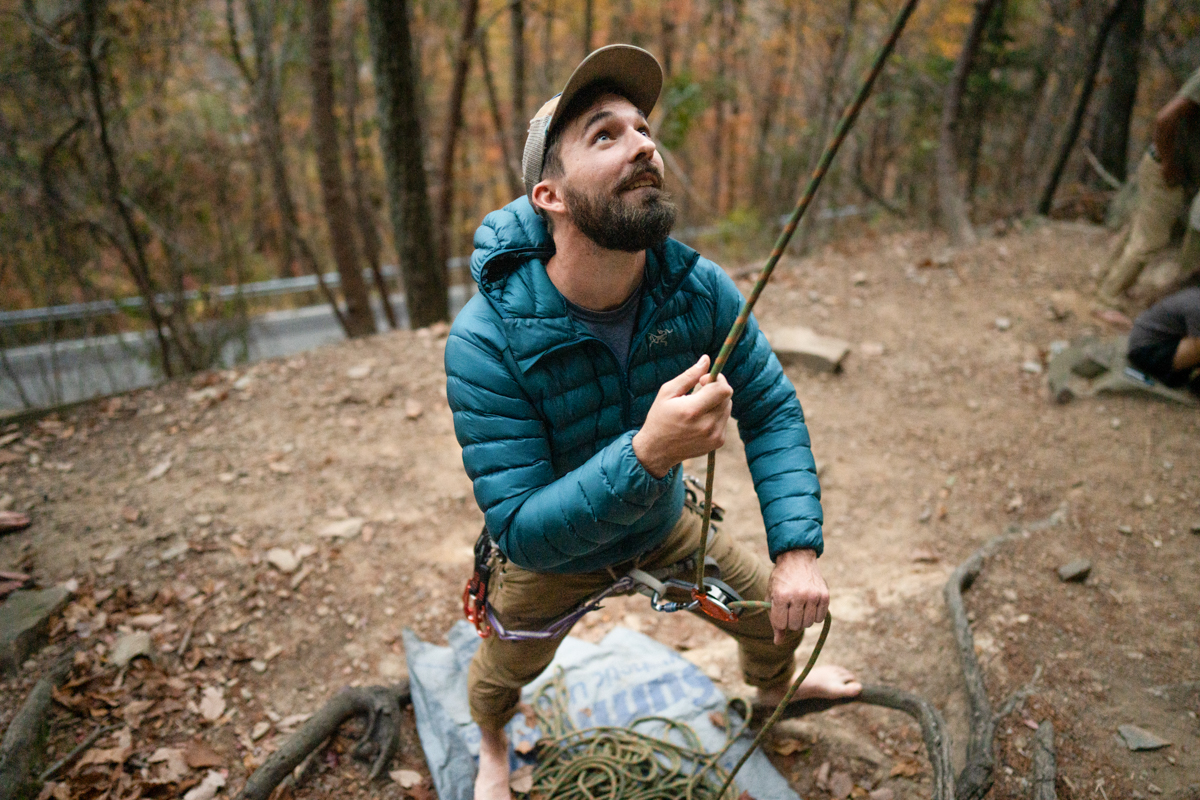
We’d be remiss not to mention the hazards of using an assisted-braking device. As we said, when used correctly, they offer the height of safety for belaying and rappelling. But when used incorrectly, the consequences can be dramatic. There are numerous documented instances of belayers loading their device backward or opening the lever all the way when lowering their climber, too many of which did not end well. Our author was even in an accident involving a Petzl Grigri where the rope caught the lever and held it open when he fell, resulting in a ground fall and serious injuries. The takeaway: Don’t let your guard down when using an assisted-belay device, and always operate as per the manufacturer’s instructions.
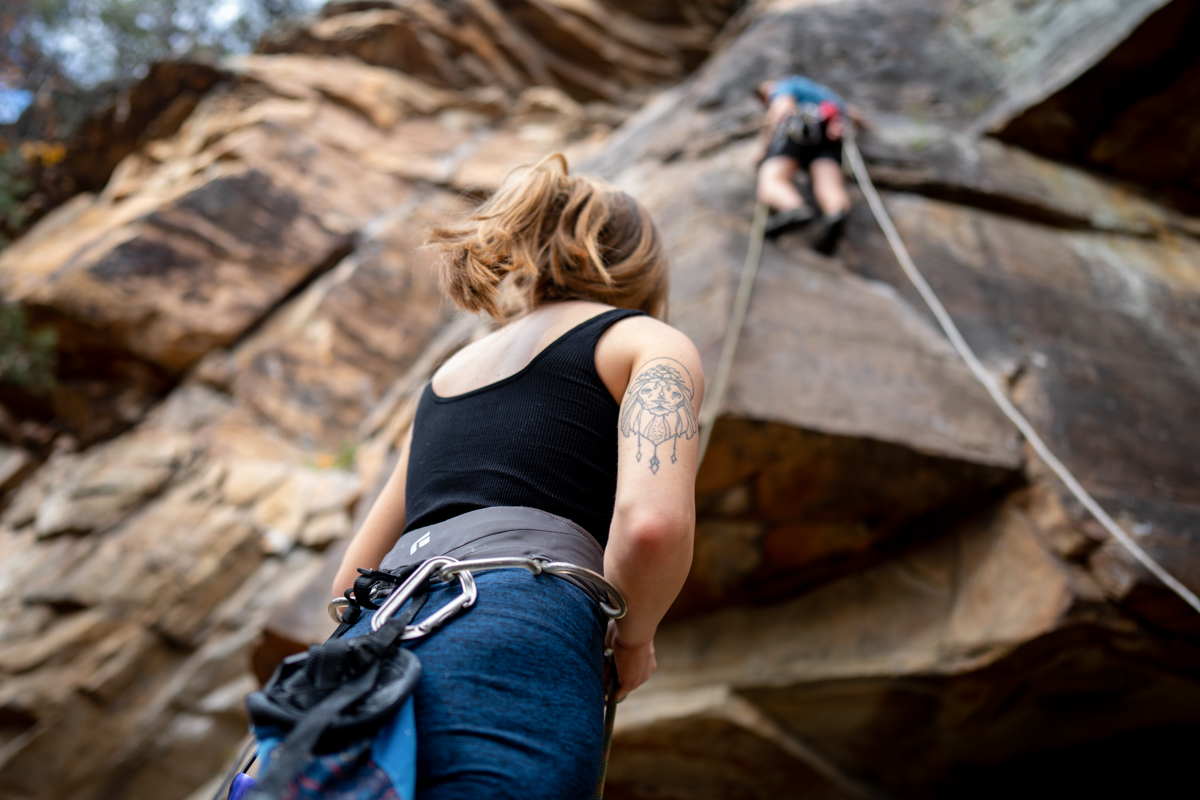
Plate
Often used in canyoneering and rappelling-specific contexts, belay plates have a few uses for climbing, although most beginning climbers will opt for the tube-style and assisted-braking devices above. We recommend belay plates for one main purpose: belaying a follower (or two) from an anchor (as in a multi-pitch scenario). Modern plates are auto-blocking and more lightweight and compact than tube, auto-blocking tube, and assisted-braking devices. However, take note that belay plates are not as versatile as other devices—they’re difficult to operate both for lead belaying and rappelling. But for ounce counters, they can provide a great substitute for heavier and bulkier devices (Kong's Gi-Gi is a popular option in this category).
.jpg)
In certain situations—such as climbing as a party of three, using twin ropes, and rappelling—you’ll need a belay device that can handle two ropes. The vast majority of tube-style devices and plates have this capability with two rope slots, while most assisted-braking devices are designed to handle just one rope (with the exception of the Edelrid Mega Jul and Giga Jul). If you’re climbing with two ropes or rappelling on a doubled-over rope (not a fixed line), make sure you have the proper tool for the job. Finally, it's good practice to always back up your rappel with a “third hand” friction hitch like Sterling’s popular HollowBlock2. Here’s a quick YouTube video showing how to safely set up a friction hitch while rappelling.
.jpg)
That said, on multi-pitch climbs, it's common for a team to have one assisted-braking device (such as a Petzl Grigri) and a second auto-blocking tube or plate device to accommodate two ropes. In this scenario, the first climber will descend the rope—fixed at the halfway point—with the assisted-braking device, and the second will unfix the rope and descend with the tube or plate. Teams of two can also opt to simul-rappel, where they use two Grigris (or other assisted-braking devices) on either side of the rope and rappel down together, using the weight of each other as a counter-balance. This can be a quick and efficient way to get down but requires a lot of communication and practice—if one climber unweights the rope during a simul-rappel, the other climber will fall. As an added safety measure, it’s good practice for climbers to be tethered together to avoid one getting too far ahead or behind. Regardless of how you choose to get down, make sure to always tie knots in the ends of your rope to avoid rappelling off the end (a surprisingly common but entirely avoidable accident in multi-pitch climbing).
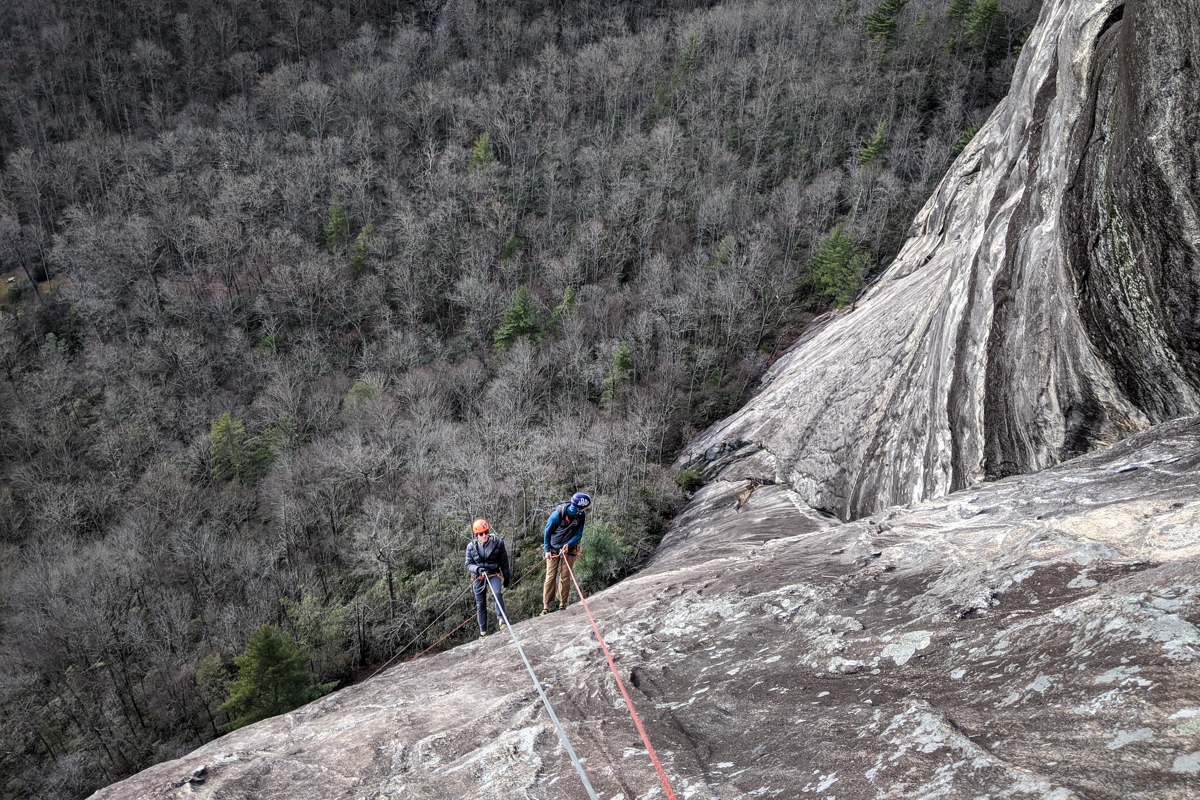
Most belay devices are made to handle a range of rope sizes, with tube-style (both standard and auto-blocking) and plate devices being the most versatile and assisted-braking devices having the smallest ranges. For example, the Petzl Verso can accommodate ropes 6.9 to 11 millimeters in diameter, while something like the Black Diamond ATC-Pilot is limited to 8.7- to 10.5-millimeter lines. While it can be possible to operate a device with a rope smaller or larger than specified, it is not optimal and often compromises safety. As skinnier and skinnier ropes hit the market, it’s very important to make sure that your belay device safely pairs with your rope.
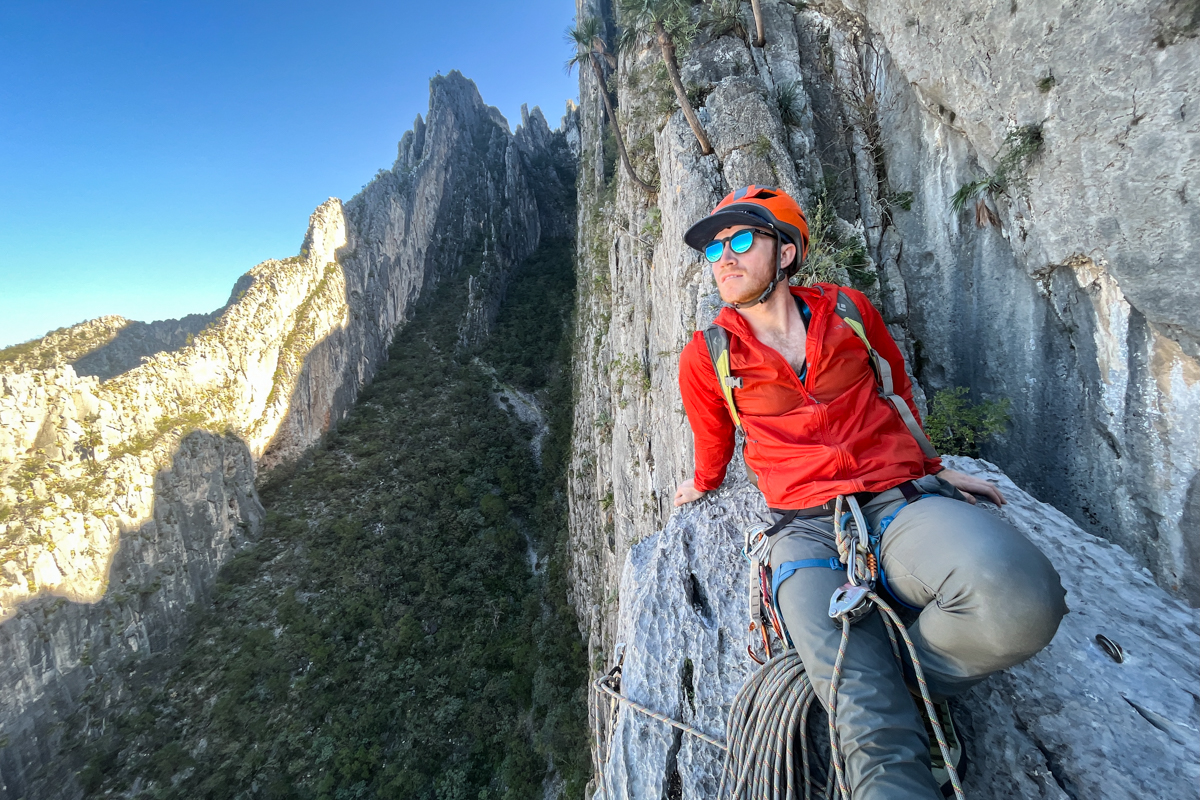
Without exception, you should always use a locking carabiner in tandem with a belay device—unless you are using the unique Edelrid Pinch which can attach directly to your belay loop. If you’re the type that likes to keep it simple, any locking carabiner will do the trick. Black Diamond's classic RockLock is a beginner favorite due to its versatility and durability. That said, there are myriad options to choose from, and some do the job better than others. In this context, the main concern is cross-loading: You never want the carabiner to flip sideways on your harness, where the force begins pulling side-to-side rather than parallel with the spine. Carabiners like the Black Diamond GridLock, DMM Belay Master, and Edelrid HMS Bulletproof Screw FG all use slightly different technologies to ensure that this does not happen. Of course, it’s OK to belay with a standard locking carabiner, but be sure to keep your eyes on your device from time to time to make sure it is correctly situated.
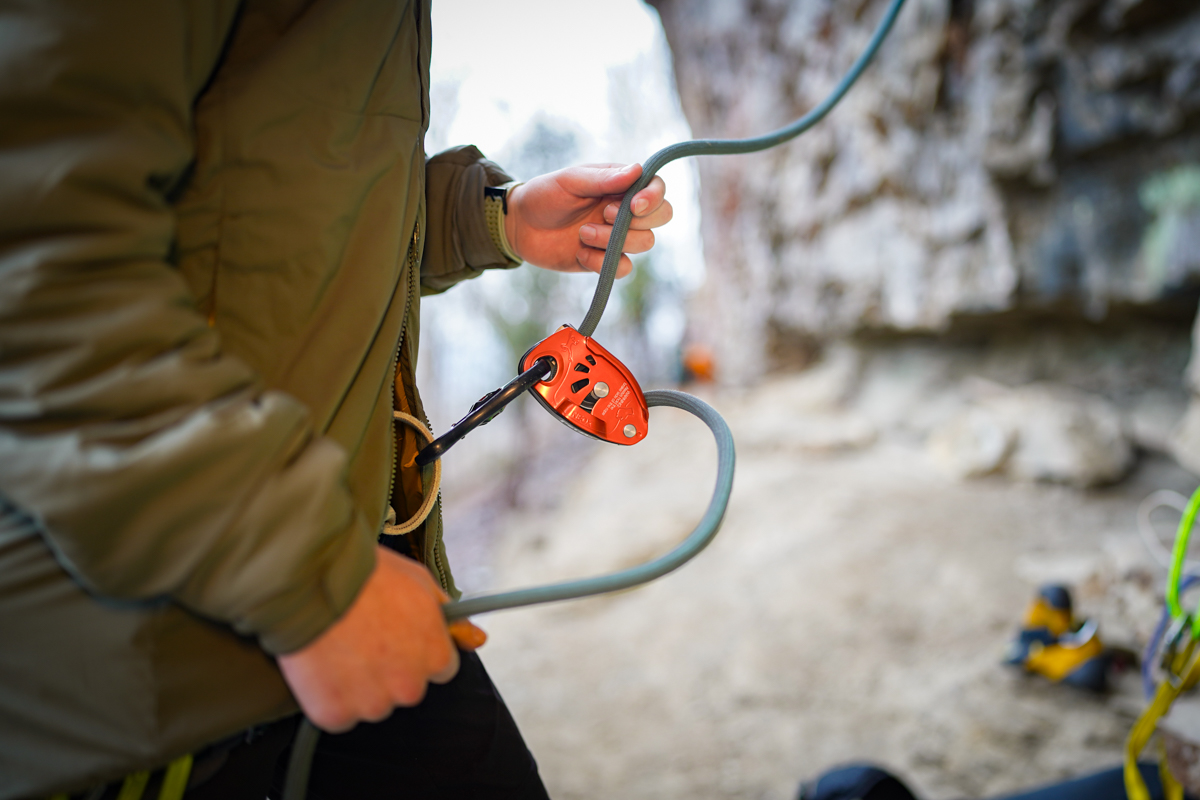
As we covered above, there are times (mainly in multi-pitch environments) when a climber will belay his or her partner from above. In this scenario, a climber leads a pitch, and—instead of lowering to the ground—builds an anchor and belays their partner up to them. Almost 100% of the time, the best setup for this sort of belay is an auto-blocking tube device secured to the anchor in guide mode. The belay is more ergonomic and less constraining since the device is not attached to the belayer’s harness, and when the climber falls or weights the rope, the climber strand locks down on the brake strand and prevents the rope from slipping. Plate devices also function well for top belaying, especially when you’re trying to cut weight and bulk. Finally, many assisted-braking devices, like Petzl's Grigri, can work for a top belay as well, but keep in mind they add unnecessary heft and are generally less straightforward to use (it's worth noting, that we did not particularly like top belaying with the Grigri's cousin, Petzl's Neox). And as is the case with all assisted-braking scenarios, belayers should be sure to keep one hand on the brake strand at all times.
.jpg)
When all else fails, there’s always the Munter hitch. In a situation where you drop or forget a belay device, a Munter hitch can be used for all belaying or rappelling scenarios: lead belaying, belaying a follower, top-roping, and rappelling. Because this knot is not intuitive, puts a lot of wear on the carabiner, and causes the rope to kink, we don’t recommend it as an everyday replacement for a belay device. But in a pinch, the Munter hitch can be a lifesaver (here's a quick tutorial on how to tie it). As always, be sure to learn and practice this knot before heading out to the crag.
Back to Our Top Belay Device Picks Back to Our Belay Device Comparison Table